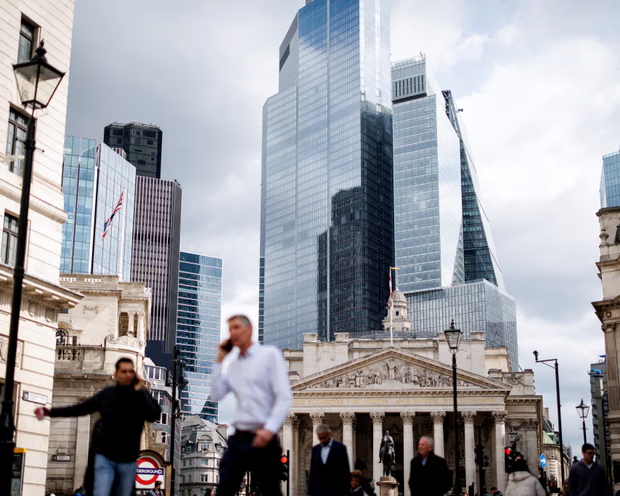The UK is expected to record the highest inflation among G7 nations this year, according to the Organisation for Economic Co-operation and Development. Rising food prices and a £25 billion increase in employer national insurance contributions have been cited as factors pushing up costs. The OECD predicts that inflation in the UK will average 3.5 percent in 2025, well above even the United States, where it is expected to reach 2.7 percent despite the impact of historically high tariffs imposed by Donald Trump.
The OECD also forecast that UK inflation will ease to 2.7 percent next year, still above the Bank of England’s 2 percent target. Regulated prices, including water and energy bills, as well as the NICs rise, were cited by the Bank as reasons for sustained above-target inflation.
The organisation warned that strict tax and spending policies would constrain economic growth over the next 12 months. It projected UK GDP growth of 1.4 percent this year, slightly up from its previous estimate of 1.3 percent. However, growth next year is forecast at just 1 percent, a sluggish rate that poses challenges for Chancellor Rachel Reeves as the Labour government seeks to boost the economy.
Britain’s tighter fiscal stance, characterised by higher taxes and reduced public spending, is expected to weigh on economic activity. Reeves is set to present her budget on November 26, and it is anticipated that taxes will be raised further. If the OECD’s forecasts hold, the UK will rank in the middle of G7 GDP growth projections for 2026, behind the US at 1.5 percent, Germany at 1.1 percent, and Canada at 1.2 percent, but ahead of Italy, Japan, and France. This year, the UK is expected to be the second-fastest growing G7 economy after the US.
Responding to the OECD’s figures, Reeves emphasised the UK’s relative economic strength. She said the first half of the year showed the UK growing faster than any other G7 nation, but acknowledged there is more to do to build an economy that benefits working people. Conservative leader Kemi Badenoch criticised the report, attributing the high inflation and slowing growth to Labour’s economic policies. She argued that Britain needs strong leadership and a clear plan to restore confidence and growth.
The OECD’s interim economic outlook highlighted that the global impact of Trump’s tariffs has been slower than initially expected but will affect global growth in the coming months. Global GDP growth for 2025 was upgraded to 3.2 percent from 2.9 percent, reflecting stronger-than-anticipated resilience in emerging markets. Industrial production and trade were supported by front-loaded exports in anticipation of higher tariffs.
Looking ahead, the OECD predicts slower global growth of 2.9 percent in 2026, the same as in its previous forecast. In the US, higher tariffs and slower net immigration are expected to reduce GDP growth from 2.8 percent last year to 1.8 percent in 2025 and 1.5 percent in 2026. The OECD notes that the full effects of higher US tariff rates are yet to materialise.
Private sector sentiment in the UK also showed signs of strain. A survey by S&P Global found that sales and boardroom confidence, which had recovered in previous months, weakened in September. The flash composite purchasing managers’ index eased to 51.0 from August’s 53.5. Chris Williamson, chief business economist at S&P Global Market Intelligence, pointed out that the prospect of further tax increases in the upcoming budget is dampening business confidence, even as firms struggle with rising input costs and cautious consumer spending.
The OECD’s outlook underscores the challenges facing the UK economy. Rising inflation, constrained growth, and a tighter fiscal stance create a complex environment for policymakers, businesses, and consumers alike, with the UK poised to face the highest inflation among its major industrial peers this year.







